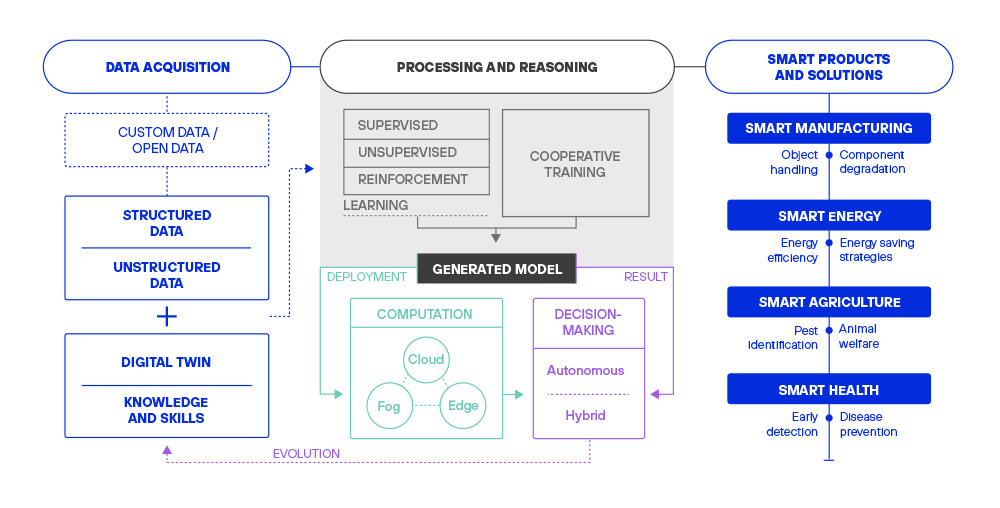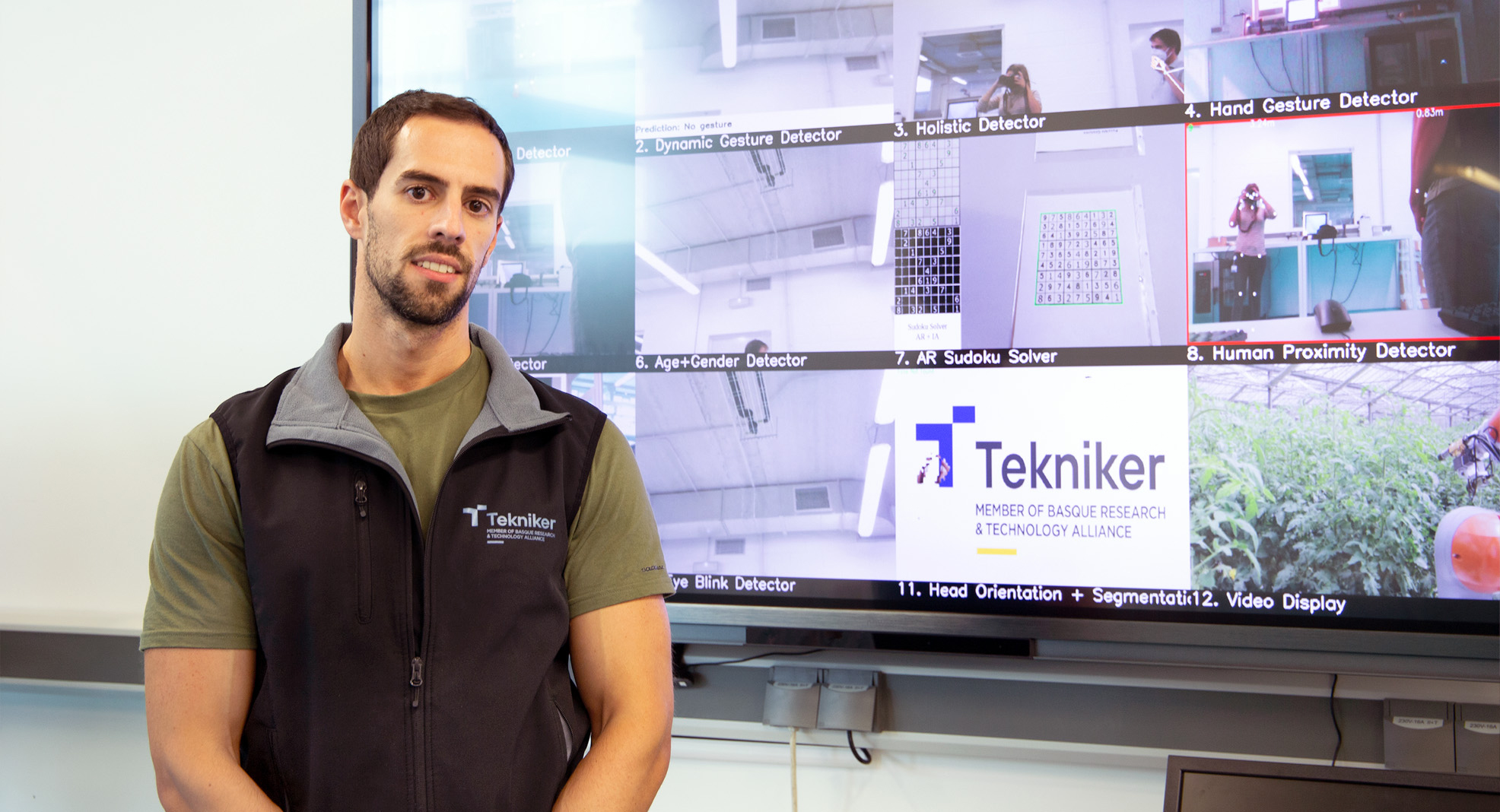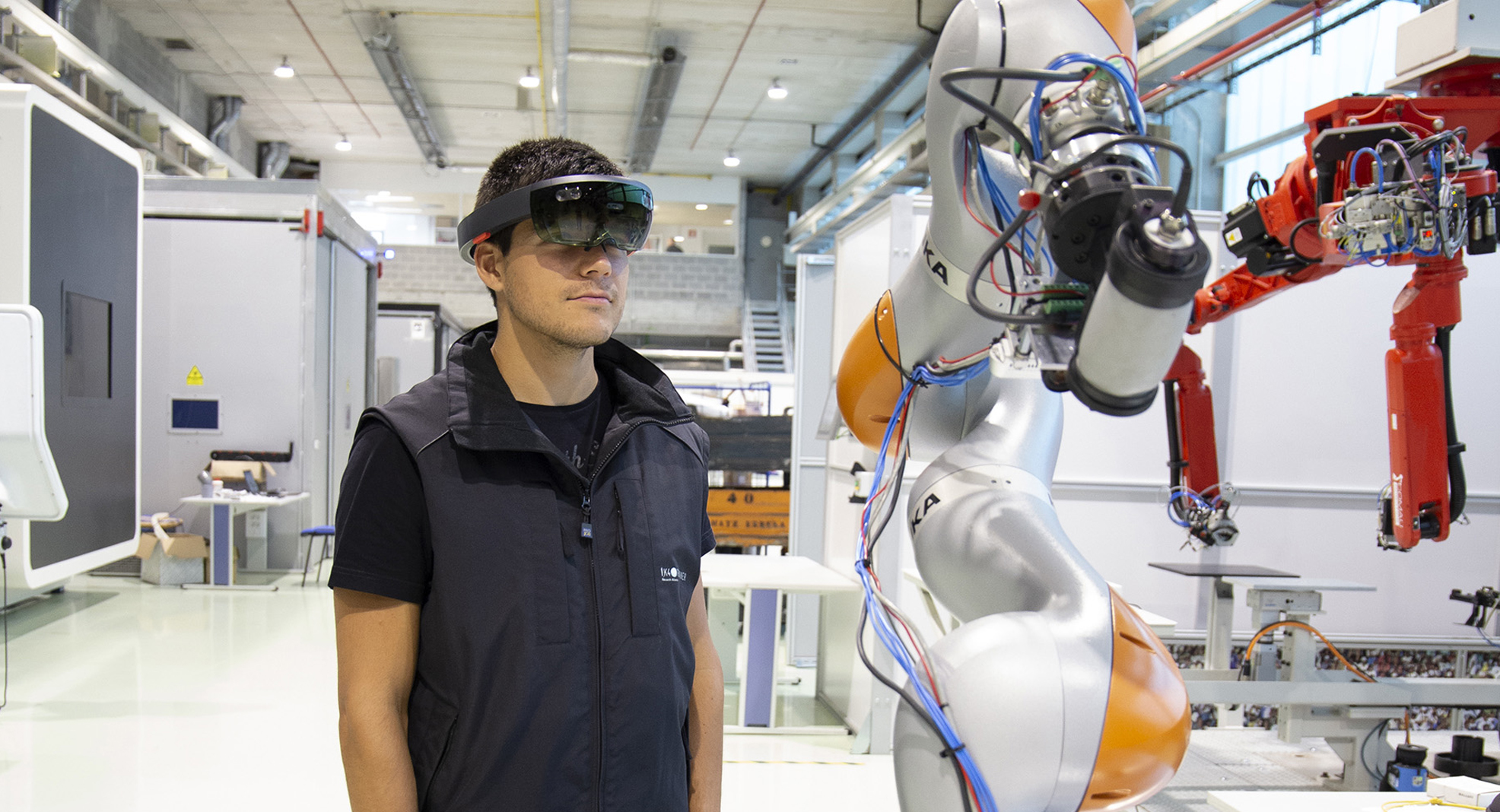The expert's view: Iker Esnaola, AI coordinator at Tekniker
The Basque Artificial Intelligence Centre (BAIC) was set up earlier this year to boost the Basque Country’s leadership role with regard to furthering research actions and projects related to this particular technology. Tekniker has all the necessary tools and expertise to become an outstanding asset in the new Basque ecosystem related to AI.
The Basque Country’s 2025 Digital Transformation Strategy approved by the Basque Government on March 31st 2021 clearly states that Artificial Intelligence is one of the most essential technological levers needed to address the main challenges that society and the Basque industrial sector are currently facing.
This technology, however, is not only present in the Basque Country’s digital transformation plans as the European Commission, leading technological powers and some of the most advanced small countries such as Finland, Denmark, Slovenia or Estonia have also put their stakes on developing and applying AI within the framework of their R&D strategies.
The Basque Artificial Intelligence Centre (BAIC) has been set up this year to allow the Basque Country to become an active leader in the area of research than can speed up projects related to AI and improve the competitiveness of the Basque industrial fabric.
This new element of public-private collaboration will focus on several goals: furthering the development of this technology in the Basque Country, articulating an all-encompassing system around AI and fostering the creation of new companies in this sector by involving local driving-force businesses.
One of the challenges this new stakeholder will have to deal with is related to boosting synergies between the different scientific-technological capabilities that already exist in the Basque Country in the area of Artificial Intelligence.
Tekniker, an organisation that boats extensive expertise in the area of AI, is one of the scientific-technological actors that is already present in the Basque Country.
AI at Tekniker, from the cloud to the edge
We at Tekniker have been developing products and solutions based on AI technologies aimed at boosting an industry that is digital, smart, resilient and sustainable for a number of years.

The solutions offered by the technology centre in this field include, for instance, machine and deep learning techniques based on images, texts or measurements.
It is in this field of machine learning that other techniques can be found such as reinforcement learning, i.e., learning based on a penalty/reward system; those focused on enhancing safety in collaborative environments and person/robot interactions (gesture recognition, proximity detection, person identification); those designed to inspect and identify part defects or the condition of foodstuffs; or those that are related to recycling and robotic handling in warehouses.
The broad range of AI technologies offers also includes artificial vision solutions for inspection or robotic navigation; data analytics to manage mobile logistic fleets; probabilistic techniques used to manage robot navigation & trajectories; or linguistic technologies such as Natural Language Processing for person/machine interactions.
The semantic technologies currently at our disposal also cover a wide range of applications by representing expert knowledge and rationale applicable to multichannel person/machine interactions; by defining usage policies and ensuring that these policies complied with; or by developing adaptive and adaptable interfaces.
On the other hand, the combination of big data and machine learning technologies with digital twin technologies offers major advances in terms of predictive and prescriptive maintenance actions for equipment. It also guarantees quality and allows for data quality management.
And, lastly, the implementation of the edge processing paradigm for embedded AI algorithms that can be run locally on processors to develop applications for vehicles, applications for component status analytics and medical devices.
Tekniker’s experience within this range of Artificial Intelligence technologies is associated with multiple applications based on data acquisition, processing and reasoning to develop smart products and solutions.
AI and how it is applied in the sector
Industry
Among other applications, Tekniker has made significant progress in the area of predictive maintenance as condition monitoring, among other techniques, allows companies to anticipate potential equipment and component failures to prevent unscheduled shutdowns that are frequently associated with significant losses.
Another of the applications we are currently working on is geared towards improving production processes and, more specifically, providing customised technical assistance for technicians when performing their tasks by means of augmented reality tools and dialogue systems based on natural language processing.
Energy
Another of the sectors in which AI is going to play an essential role is related to energy efficiency and the operation of renewable energies.
At Tekniker, we have developed solutions based on machine learning to predict energy demand and production in neighbourhoods in order to maximise the utilisation of power supplied by renewables and achieve higher levels of efficiency. Thanks to these solutions it has been possible to increase the use of renewables by 12%; grid power consumption has been cut back by nearly 30% and energy demand peaks have dropped by approximately 30%.
Likewise, AI can play a significant role in terms of electromobility when optimising car charging and storage times to achieve improved grid stability.
Agriculture
The Agrifood industry has also benefitted from advances made in AI. More specifically, a number of improvements have been implemented that have impacted the entire value chain; from the farm to the table, thanks to the early detection and treatment of plagues inside greenhouses or by achieving sustainability, animal well-being and end product quality.
We have developed a smart solution at Tekniker called GreenPatrol for pest control inside greenhouses. The project combines artificial vision on the edge for leaf detection, artificial vision in the cloud to identify pests and route planning systems to administer pesticides in specific areas. In this manner, it is possible to avoid 15% of the losses previously reported in the sector, less insecticide is used and manual work is only minimal.
Health
Tekniker’s AI technologies, on the other hand, can also deliver applications in the areas of health and customised medicine such as, for instance, a remote monitoring system developed by iLine Microsystems for patients undergoing anti-clotting treatment.
This system has been developed based on artificial vision and allows healthcare professionals and patients to monitor their treatments and pathologies without having to go to healthcare centres.
Thanks to a compact and competitive design, this CE-marked device allows rapid tests to be performed, meaning that users only have to wait for one minute to obtain their results after analysing a single drop of blood. Thanks to this method, it is now possible to run tests once or twice a week instead of every 4 or 6 weeks and allows patients to maintain their blood clotting levels within controlled ranges 90% of the time.
The present and future of AI
Although AI is nowadays a mature technology, implementation, deployment and application are still in their early stages in certain domains. At Tekniker, however, we are working on AI systems on a case-by-case basis to contribute to achieve a higher degree of acceptance of these technologies.
The possibilities AI offers are endless as it is a constantly changing technological area that will have an impact practically all of the industrial sectors and on society at large. It has been the main driving force behind emerging technologies such as Big Data, robotics or IoT and will progress even further to eventually become the main source for future technological innovations.




